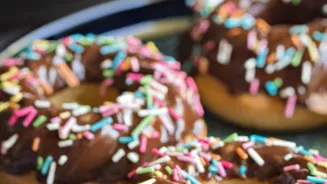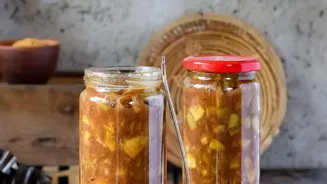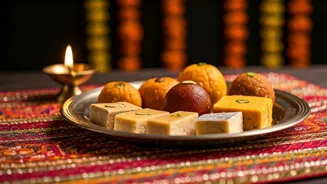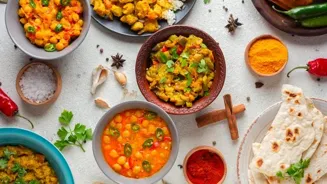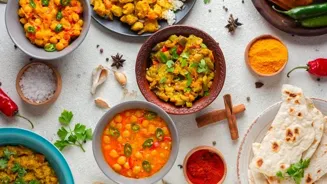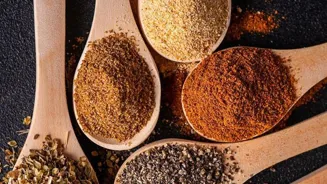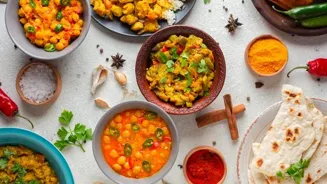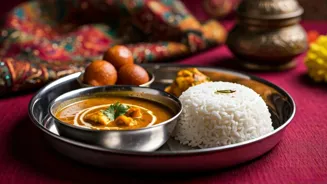Embark on a Sweet Journey through India's Diverse Desserts! From creamy Rasmalai to crispy Jalebi, discover the regional symphony of flavors and ingredients in this tantalizing exploration. Join us in unraveling
the cultural tapestry woven through these delectable treats. Read more to delve into the world of Indian sweets!
India, a land renowned for its vibrant culture and diverse traditions, also boasts a mesmerizing array of desserts that tantalize taste buds and leave you craving for more.
From the snow-capped Himalayas to the sun-kissed beaches of the south, each region offers its unique sweet treats, reflecting the local ingredients, culinary techniques, and cultural influences.
Join us on a delectable journey as we explore the fascinating world of Indian desserts, uncovering their history, ingredients, and regional variations. It is like taking a trip across the beautiful land, just through its foods.
A diverse array of Indian desserts showcases rich flavors
The sheer variety of Indian desserts is astounding. Imagine a spread that shows the culinary diversity of India.
There are milk-based sweets like the creamy Rasmalai swimming in saffron-infused milk, the melt-in-your-mouth Gulab Jamun soaked in rose-flavored syrup, and the rich, condensed milk confection called Barfi.
Then there are the flour-based delights, such as the crispy, golden Jalebi, the flaky, sugar-dusted Khaja, and the melt-in-the-mouth Mysore Pak. The use of nuts, spices, and fruits further elevates these desserts, adding layers of flavor and texture.
Whether it's the aromatic cardamom in Shrikhand or the crunchy pistachios in Kulfi, each ingredient plays a vital role in creating a symphony of flavors.
North India's rich Mughlai sweets evoke warmth in winters
North India beckons with its Mughlai-inspired sweets, where rich ingredients like milk, nuts, and saffron reign supreme. Gulab Jamun, small balls of milk solids deep-fried and soaked in sugar syrup, is a popular choice. Then there’s Gajrela, a sweet carrot-based dessert often enjoyed during winters.
It’s a comforting blend of grated carrots, milk, sugar, and nuts, slow-cooked to perfection. Every bite is a warm hug on a cold day.
Bengali sweets showcase culinary prowess in the East
Moving towards the East, it is here you find yourself in the land of Bengal, where the art of sweet making transcends mere cooking. From the creamy, melt-in-your-mouth Rasgulla (cheese balls in syrup) to the sandesh (milk fudge), Bengali sweets are a testament to the region's culinary prowess.

It’s a soft sweet treat, that tells you a lot about this region. Misti Doi, a fermented sweet yoghurt, is another beloved dessert, known for its smooth texture and tangy-sweet taste. Bengalis certainly know how to make a treat!
South Indian sweets: Payasam, Mysore Pak, and Adhirasam highlight rice, lentils, and coconut
South India is all about incorporating rice, lentils, and coconut into its sweets. Payasam, a creamy rice pudding flavored with cardamom and nuts, is a staple during festivals and celebrations.
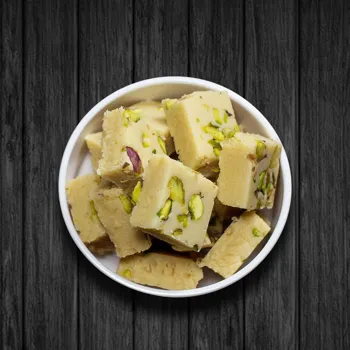
Mysore Pak, made from gram flour, ghee, and sugar, is a melt-in-your-mouth confection that originates from the city of Mysore. It is a must have when you come to this side. Another popular sweet is Adhirasam, a deep-fried rice flour cake, reminiscent of a sweet donut.
West India's famous sweets: Shrikhand, Modak, and Ladoos
West india has a sweet that is rich in ghee. Shrikhand, a strained yogurt dessert, captures many with its delicious taste. Modak, a steamed rice flour dumpling filled with coconut and jaggery, is especially popular during the festival of Ganesh Chaturthi.
Gujrat is known for its ladoos, which it brings out for special occassions. From the besan ladoo to motichoor ladoo, everyone knows that you can enjoy it.
Indian desserts feature natural ingredients like milk, sugar, spices, and nuts
One of the defining characteristics of Indian desserts is the use of natural ingredients. Milk and milk products like khoa (reduced milk solids) form the base for many sweets, lending them a richness and creamy texture.
Sugar, jaggery, and honey are the primary sweeteners, each imparting a unique flavor profile. To enhance the flavors and aromas, spices like cardamom, saffron, nutmeg, and cloves are generously used. Nuts like almonds, pistachios, cashews, and raisins are added for texture and garnish.
Even edible silver foil, known as Vark, is some times used to beautify the treat!
Ghee is crucial in festive treats for rich flavor and blending
The use of ghee is also very important for most of the treats. It imparts a rich flavor that is distinct in these treats. Ghee is a flavor booster and helps many of the sweet ingredients blend well together. In many cases, it is an important ingredient.
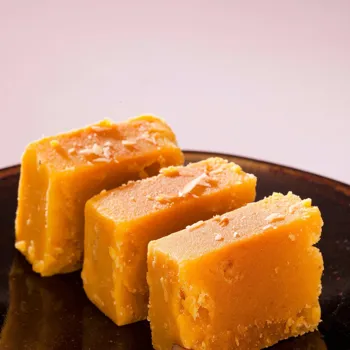
Because, it would not turn out exactly as it does without ghee. Other ingredients used depends on what you are making and for which festival you are making it for. It is a fun process to shop for ingredients and prepare delicious food!
AI Generated Content. Glance/InMobi shall have no liability for the content